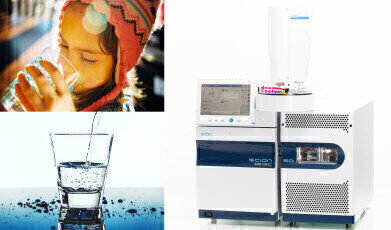GC-MS
SCION’s Versatile Instruments are Meeting the Most Challenging Requirements
Aug 08 2018
The main purpose of using GC-MS in any analysis is to be able to positively identify compounds without standards and quantify low level of those compounds in a variety of matrices. Being able to equip analytical instruments with the most advanced technology is vital to allow limits of detection and quantification to be reached at part per billion (ppb) levels and for some applications, even lower. However, for most analytical laboratories cost and time constraints do not allow for extensively modified systems. SCION Instruments offers customised gas chromatography and mass spectrometry systems to meet the most challenging analytical requirements. Specifically, the high-level automation of the SCION GC-MS allows users to complete their solutions with minimal training. The Premium GC-MS system offers a versatile instrument that delivers the sensitivity and selectivity required without the need for expensive modification.
1,4-Dioxane is a synthetic industrial chemical stabiliser found in various paint strippers, greases and waxes. 1,4-Dioxane is a highly soluble ether that does not readily bind to soils so easily leaches into groundwater resulting in contamination of drinking water. Contamination of water supplies is vast across the United States of America with dioxane levels ranging from 2ppb to over 11,000ppb being detected at 67 different locations. Over 34 of these sites have been deemed a national priority for the release of the hazardous substance into the drinking water supply. Due to being resistant in nature, 1,4-dioxane does not undergo natural biodegradation processes.
The United States Environmental Protection Agency (US EPA) classified 1,4-dioxane as a likely carcinogenic to humans with common side effects including irritation to eyes, nose and throat with kidney and liver damage being noted after long term exposure. Federal screening levels and state health-based drinking water guidance values have been established, however, as of yet no federal law has been determined. The guideline range is from 0.25ppb to 77ppb, with the average contamination ranging between 3-6ppb.
The SCION Premium GC-MS (SQ) was coupled with a Tekmar Atomx Purge and Trap system to detect 1,4-dioxane at low levels. The MS was easily able to detect 0.3ppb levels of the water contaminant whilst still offering excellent signal to noise. A SIM method was implemented for the detection of m/z 88, the quantifier ion of 1,4-dioxane. Other non-SCION GC-MS systems require additional heating units and system modifications in order to reach the same low-level quantification whilst still not being able to match the signal to noise.
The sensitivity of the SCION GC-MS can be further maximised with method development including reducing the split mode or modifying the Tekmar Purge and Trap to include a heating unit for the samples.
Digital Edition
Chromatography Today - Buyers' Guide 2022
October 2023
In This Edition Modern & Practical Applications - Accelerating ADC Development with Mass Spectrometry - Implementing High-Resolution Ion Mobility into Peptide Mapping Workflows Chromatogr...
View all digital editions
Events
ACS National Meeting - Fall 2024
Aug 18 2024 Denver, CO, USA
Sep 04 2024 Chiba, Tokyo, Japan
Sep 04 2024 University of Warwick, Coventry, UK
Sep 10 2024 Rockville, MD, USA
Plastics Recycling World Expo Europe
Sep 11 2024 Brussels, Belgium














